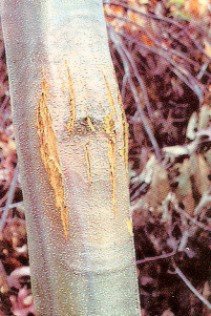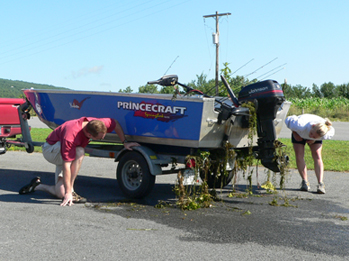Just as we are learning methods to prevent spreading the corona virus between humans, wearing masks, using hand sanitizer, and keeping six feet apart, the same techniques can be used to prevent spreading diseases between animals that we come into contact with.

One vulnerable group of creatures are our beloved American bats-specifically 13 hibernating species. White Nose Syndrome is when a fungus called Seudogymnoascus destructans infects the bats, causing a powdery white material to develop on their noses. The biggest issue with this is that it prevents hibernating bats from fully hibernating. This means that they are more active than they should be, and rather than resting, they burn up their winter fat stores too fast. For many, this means they are unable to survive the winter.
The reason this is comparable to human transmission of the coronavirus is that while humans are the cause of the virus’s spread, they are also a significant distributor of the fungus from cave to cave. The spores will gather on climbing gear in one cave used by spelunkers who then travel to a second cave, then a third, and so on, spreading the fungus as they go. Bats across America die simply because humans decided to go visit their caves. The spelunkers certainly have no ill intent, and many of these people are actually bat researchers, unintentionally harming the bats while actively trying to help them.
Thus there are now guidelines in place to help protect bats from human transmission of Seudogymnoascus destructans. These guidelines focus on preventing spread by both decontamination of equipment and not using potentially contaminated equipment in uninfected areas. You can find the decontamination protocols here: https://s3.us-west-2.amazonaws.com/prod-is-cms-assets/wns/prod/7a93cc80-b785-11e8-87bb-317452edc988-National_WNS_Decon_UPDATE_09132018.pdf
Sources:
https://www.whitenosesyndrome.org/blog/working-together-to-keep-bats-worlds-from-caving-in?fbclid=IwAR3uQyZVSdyY3B67-7YaF9yBvKIbbZP0X4RQ5nMUvDlyr2lYddiwu0gTrNg
https://www.usgs.gov/faqs/what-species-bats-are-affected-white-nose-syndrome?qt-news_science_products=0#qt-news_science_products
Photo Credit: By Marvin Moriarty/USFWS https://commons.wikimedia.org/w/index.php?curid=8126465

The American Chestnut (Castanea dentata) was once one of the most dominant tree species of the eastern United States. Unfortunately, around 1904, a deadly fungus known as Chestnut blight (Cryphonectria parasitica) was accidentally introduced from Asia, wiping out virtually all of the estimated four billion trees. Certainly no one involved in introducing this fungus meant to do so, but that is what happened. The disease managed to hitch a ride on ornamental chestnut trees brought in from Asia. While the Asian species were resistant to a fungus that they had co-evolved alongside, the American ones had no such resistance.
The impact of losing nearly all of a species is catastrophic for that species, but it also had effects throughout the ecosystem. The chestnuts themselves, sought after by humans for consumption, were likewise quite delicious for many animals. The tree leaves were hosts for many caterpillars and at least seven species of moths are now extinct. Populations of bobcats, cougars, and Cooper’s hawks were also severely damaged. Habitats decreased for cavity-dwelling birds and waterways degraded into poor health due to the impact of the massive die-offs. The ecological ramifications of such an important species being nearly wiped out in only half a century are probably even worse than we realize.
While this post is dedicated to ecological impacts, it is important to note that the economic impacts were also significant. The chestnuts were harvested and eaten widely by Americans. Furthermore, the lumber was highly sought after, with billions of dollars lost as the trees disappeared.
Although the Chestnut Blight is one of the most famous instances of disease brought in from abroad, it is certainly not the only one. Sudden Oak Death, Beech Bark Disease, White Pine Blister Rust, and Laurel Wilt Disease among others are all very problematic ecologically and economically and so, much like Covid-19, proper precautions need to be taken to prevent the spread of current and future diseases.
Sources:
The American Chestnut Foundation www.acf.org
https://www.srs.fs.usda.gov/idip/about-us/
https://en.wikipedia.org/wiki/Chestnut_blight
Photo Credit: https://commons.wikimedia.org/w/index.php?curid=651322

The previous examples were about diseases that infect bats and trees, but we can use the same lessons about infections and project them onto entire ecosystems. Invasive species can have similarly disastrous impacts on an ecosystem, and water-borne invasives are no exceptions. Waterways can be choked by invasive pests, forcing the government to spent millions to keep it clear for recreational boating, not to mention their ecological importance as habitats. The main way in which invasive pests are spread in water is when they hitch rides on boats. Thus, just like decontamination of caving gear is important for the health and safety of bats, decontamination of boats is important for the health of water habitats. New York State is a good example where there is an aggressive outreach program to teach recreational boaters about the importance of this.
Their six-step program consists of :
1) Check
2) Clean
3) Drain
4) Dry
5) Disinfect
6) Visit your local boat steward
The specifics can be found here: https://www.dec.ny.gov/animals/48221.html (as well as the photo credit)
